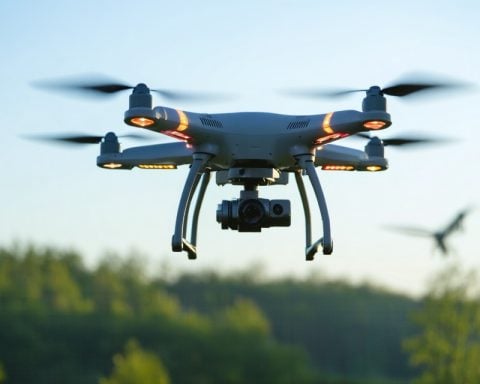Pakistan is making waves in the world of satellite technology, successfully launching two observation satellites within just a week. These launches stand as a testament to the nation’s advancements in space capabilities, showcasing collaborations with international partners.
PAUSAT-1: A Leap Forward with American and Turkish Collaboration
On January 14, Pakistan accomplished the launch of PAUSAT-1, a sophisticated earth observation satellite, aboard SpaceX’s Falcon 9 rocket during the Transporter-12 Mission. Developed by Air University, this advanced 16U CubeSat houses a high-resolution multispectral imager, achieving clarity with a ground resolution of 1.5 meters. In partnership with Italy’s Istanbul Technical University, PAUSAT-1 also includes a hyperspectral imager, enhancing its imaging capabilities significantly.
PRSC-EO1: A Homegrown Victory with Chinese Support
Just three days later, on January 17, the nation marked another achievement with the launch of PRSC-EO1, its inaugural indigenously developed satellite. This launch occurred at the Jiuquan Satellite Launch Center in China, utilizing a Long March-2D rocket. PRSC-EO1, crafted by the Pakistan Space & Upper Atmosphere Research Commission (SUPARCO), is equipped with a state-of-the-art optical payload designed for various applications, including agricultural assessments, urban planning, and environmental monitoring.
The contrasting media attention surrounding these launches highlights the growing significance of both domestic and international partnerships in advancing Pakistan’s space program. The military potential of such advanced earth observation satellites cannot be overlooked, as they play a crucial role in reconnaissance and operational planning.
The Emergence of Pakistan’s Space Program: Broader Implications
The successful launches of PAUSAT-1 and PRSC-EO1 signify a pivotal moment not only for Pakistan’s technological landscape but also for its position within the global space arena. As nations increasingly recognize the strategic value of satellite capabilities, Pakistan’s advancement in space technology carries profound implications for regional stability, economic development, and international collaboration.
As global competition in space intensifies, the accessibility of satellite technology fosters innovation, providing Pakistan an opportunity to leverage its capabilities for economic growth. High-resolution imaging can significantly enhance sectors such as agriculture, where accurate data can lead to improved crop yields and sustainable practices. Furthermore, by engaging with international partners—illustrated by its collaborations with the United States and China—Pakistan is positioning itself as a participant in space diplomacy, which could lead to greater economic investments and technological exchange.
The environmental impact of these satellite technologies cannot be understated. Improved monitoring of natural resources and urban development can lead to better climate change resilience strategies, aiding in disaster management and environmental protection efforts.
Looking forward, the integration of advanced earth observation satellites indicates a trend towards precision monitoring and data-driven decision-making across various sectors. As Pakistan strengthens its satellite capabilities, it stands to play a critical role in addressing not only national but also global challenges, thus underscoring the long-term significance of its emerging space program.
Pakistan’s Space Breakthrough: A New Era in Satellite Technology
Introduction
Pakistan has recently made significant strides in the realm of satellite technology, successfully launching two advanced observation satellites in a week. These accomplishments highlight not only Pakistan’s burgeoning space capabilities but also its commitment to fostering international collaborations while advancing its indigenous technology initiatives.
Overview of Recent Launches
PAUSAT-1: A Technological Leap with International Collaboration
Launched on January 14, PAUSAT-1 is an advanced Earth observation satellite that showcases Pakistan’s growing technological prowess. Utilizing SpaceX’s Falcon 9 rocket during the Transporter-12 Mission, PAUSAT-1 is developed collaboratively by Air University and Istanbul Technical University from Italy. Featuring a high-resolution multispectral imager, this 16U CubeSat achieves impressive clarity with a ground resolution of 1.5 meters. The addition of a hyperspectral imager enhances its imaging capabilities, enabling a diverse range of applications in environmental monitoring and resource management.
PRSC-EO1: A Landmark Achievement in Homegrown Satellite Development
Just three days later, on January 17, Pakistan achieved another milestone by launching PRSC-EO1, its first indigenously developed satellite. This accomplishment, realized at China’s Jiuquan Satellite Launch Center using a Long March-2D rocket, marks a significant step for the Pakistan Space & Upper Atmosphere Research Commission (SUPARCO). PRSC-EO1 is equipped with a cutting-edge optical payload designed for critical applications in agriculture, urban planning, and environmental assessments.
Key Features and Specifications
– PAUSAT-1:
– Type: 16U CubeSat
– Imaging Capabilities: High-resolution multispectral imager (1.5m ground resolution) and hyperspectral imager
– Launch Vehicle: SpaceX Falcon 9
– PRSC-EO1:
– Developed By: SUPARCO
– Application Areas: Agricultural assessment, urban planning, environmental monitoring
– Launch Vehicle: Long March-2D
Pros and Cons of Pakistan’s Satellite Initiatives
Pros:
– Enhanced Earth observation capabilities benefiting various sectors, including agriculture and urban planning.
– Increased independent technological development through homegrown projects.
– Strengthened international partnerships, boosting collaborative innovation.
Cons:
– Risk of military applications and misuse of surveillance capabilities.
– Dependence on international technology and support for complex satellite systems.
Market Trends and Future Predictions
As the global satellite market continues to expand, driven by demand for Earth observation data, Pakistan’s advancements in satellite technology position it as a growing player in this sector. The governments’ investment in space infrastructure and technology suggests a trend towards increased satellite launches and more complex space missions in the coming years.
Conclusion
Pakistan’s recent satellite launches underscore a significant evolution in its space program, showcasing both homegrown innovation and valuable international cooperation. These developments not only promise enhanced capabilities in Earth observation but also serve strategic objectives in national development and security.
For additional insights into Pakistan’s growing space initiatives and collaborations, visit SUPARCO.



















